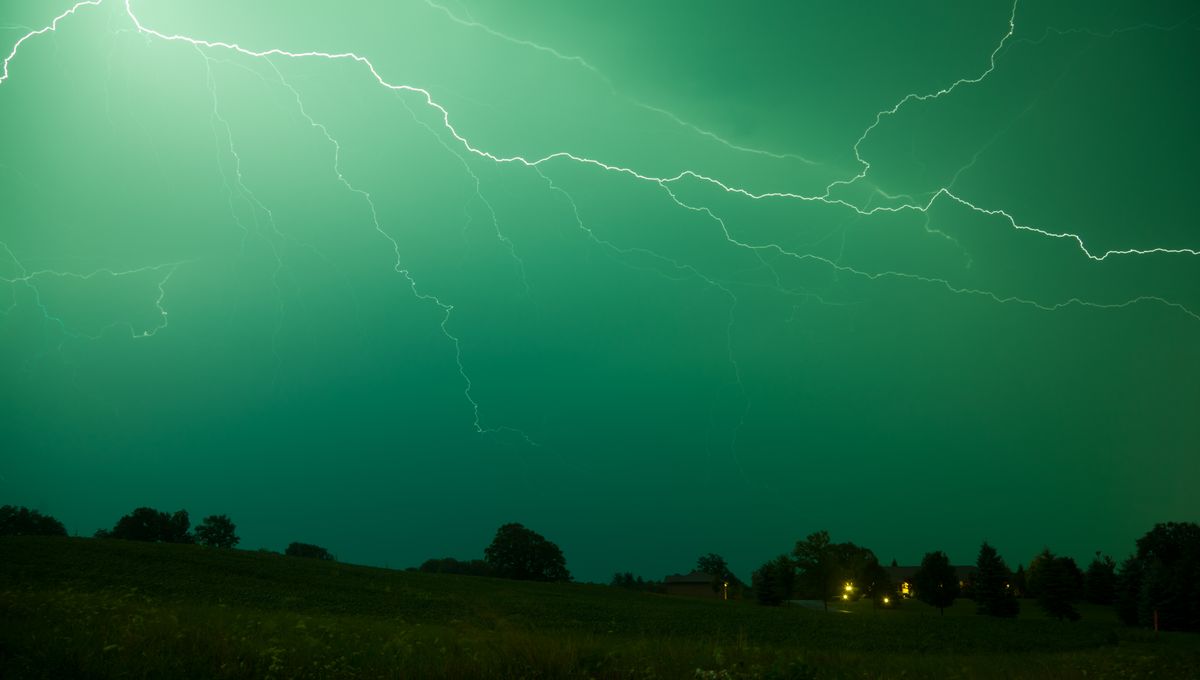
If you noticed the sky suddenly turn a vivid green, it could be nature’s way of telling you to buckle down and find shelter.
A greenish sky is often associated with incoming tornadoes, and while that belief holds some truth, it’s not quite that simple.
Meteorologists note that a green hue usually signals that storm clouds are packed with massive amounts of water and ice, conditions often found in severe thunderstorms. The eerie color shift is caused by the way sunlight filters through these dense clouds and is scattered by the atmosphere, sometimes producing that unmistakable green tint.
Green clouds “will only occur if the cloud is very deep, which generally only occurs in thunderstorm clouds. Those are the kind of storms that may produce hail and tornadoes,” Scott Bachmeier, a research meteorologist at the University of Wisconsin-Madison, said in a statement.
On a clear day, sunlight interacts with air molecules and particles in Earth’s atmosphere, scattering shorter wavelengths like blue more effectively, which is why the sky appears blue. This phenomenon is known as Rayleigh scattering.
Evening revelers and early risers will also know that the sky can appear red, orange, and pink during the twilight hours. This is because the Sun is very low in the sky during sunset and sunrise, causing the sunlight we see on the ground to travel through a much thicker chunk of atmosphere. This allows the longer wavelengths of visible light, such as pink and red, to be scattered and seen.
Thunderstorms are most likely to occur during the afternoon or evening because this is the warmest, most humid part of the day – heat and water being the two main ingredients needed for a high-energy storm. This means that thunderstorms, behind all the clouds, often have the backdrop of a reddish sunset.
The abundance of water in the brewing storm cloud can also have a scattering effect on the light, causing the cloud to glow blue. When blue clouds are illuminated with red light, Bachmeier says, it can make the sky appear green.
Stormy weather isn’t the only cataclysmic force that can change the color of Earth’s sky. Volcanic eruptions spray a bunch of ash, dust, gas, and other aerosols into the atmosphere, all of which have a scattering effect on the sunlight. Under the right circumstances, this can make the evening sky glow with hues of blue, orange, or even purple.
Eruptions have the potential the affect skies on a global scale for surprisingly long periods. On June 22, 2019, Russia’s Raikoke volcano erupted for the first time in almost a century. It was short but sweet, unleashing vast plumes of ash and sulfur dioxide into the stratosphere.
Two months later, photographers in Colorado’s Rocky Mountains noted the morning sunrise was unusually purple. Scientists at the University of Colorado Boulder used a high-altitude weather balloon to confirm that the Raikoke eruption and its flurry of airborne particles were the prime culprit.
Source Link: Why Does The Sky Turn Green When A Thunderstorm Is Brewing?